The Flying Scotsman to Plymouth
14 September 2002
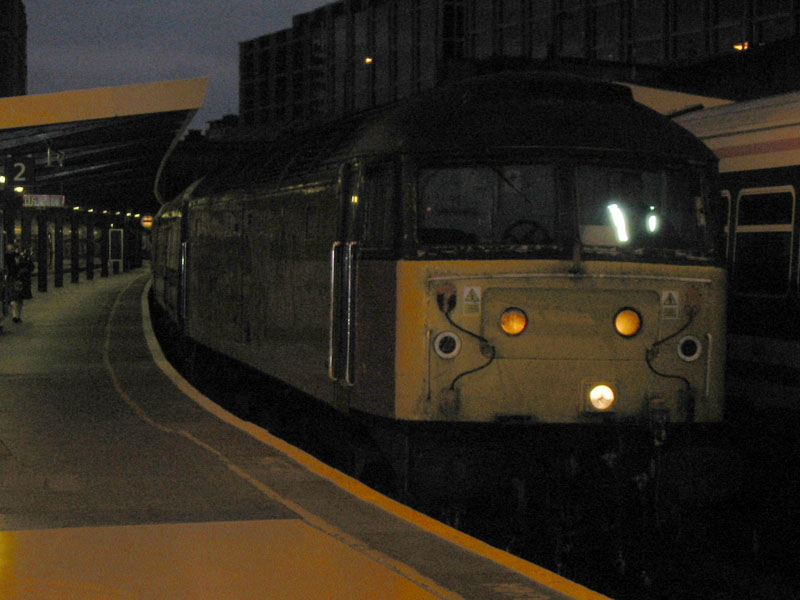
In the pale grey light of a September morning, a Class 47 pulls our train
into platform 2 at London Victoria at about 6.20am
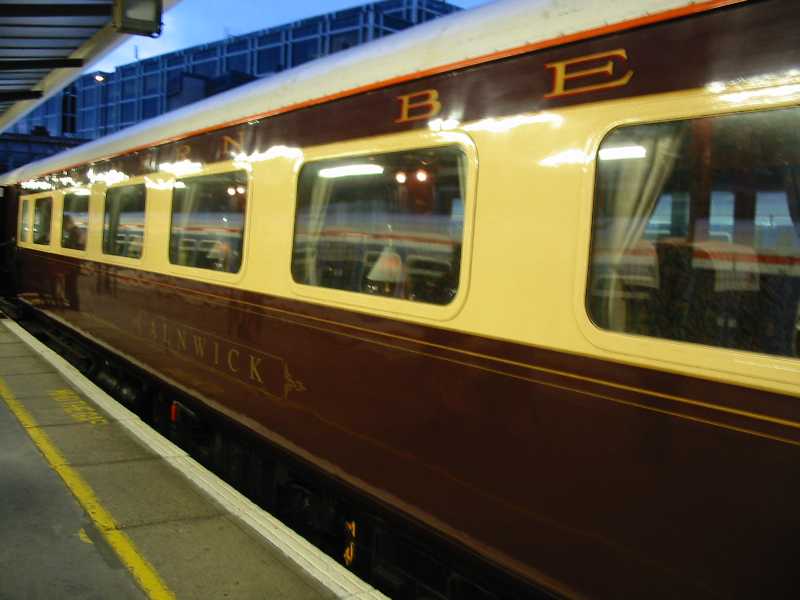
One of the Northern Belle Venice Simplon Orient Express coaches for those in
first class
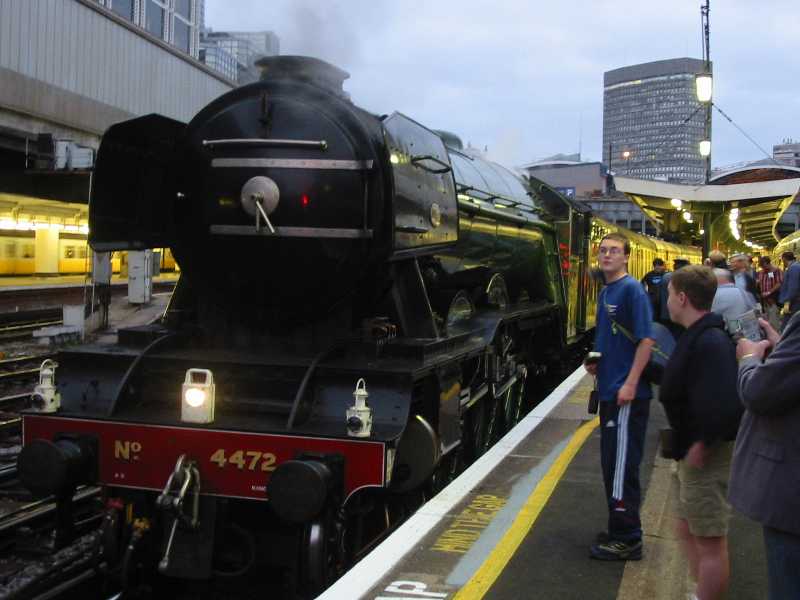
At the other end of the train, pulled into the station by the diesel, waits
No. 4472 Flying Scotsman, the most famous steam locomotive in the world.
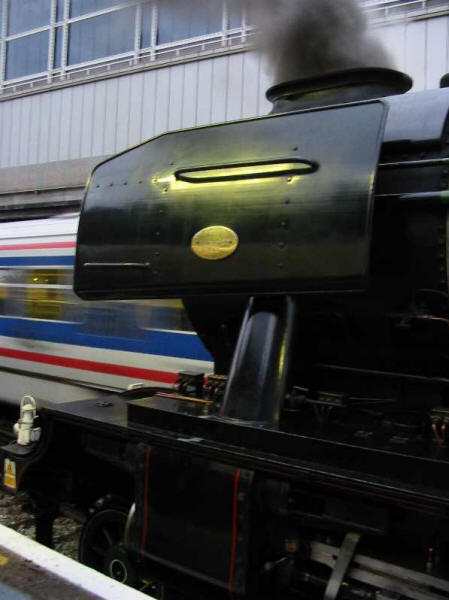
A Connex train pulls out of platform 3 past Flying Scotsman
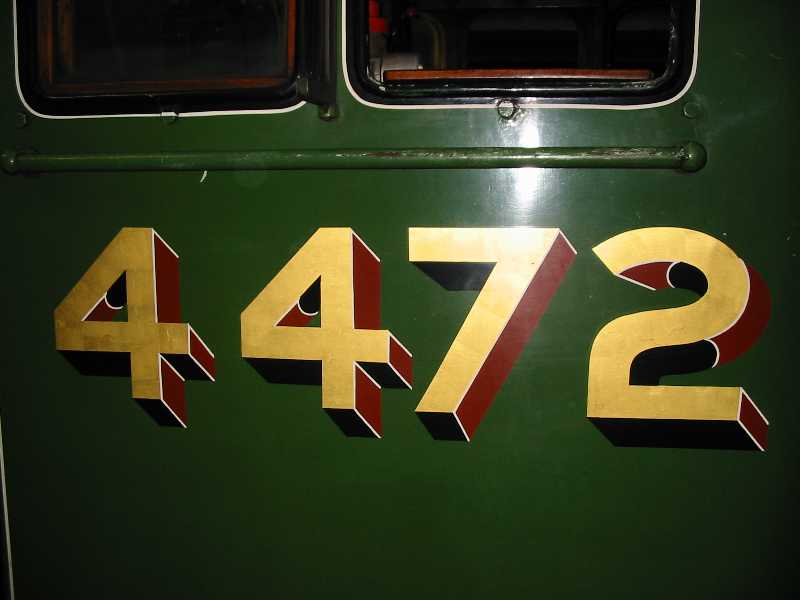
Although now carrying number 4472, that by which she is best known, Flying
Scotsman was originally 1472 before becoming 4472. Under British Railways she
was E103 and then 60103. When transferred to private ownership at the end of the
BR steam era, she reverted to 4472, and after a brief spell back as 60103
she is back to 4472 yet again!

Stephen on the footplate, with the firebox just visible below his elbow.

Stephen and Lucy in one of the standard class coaches
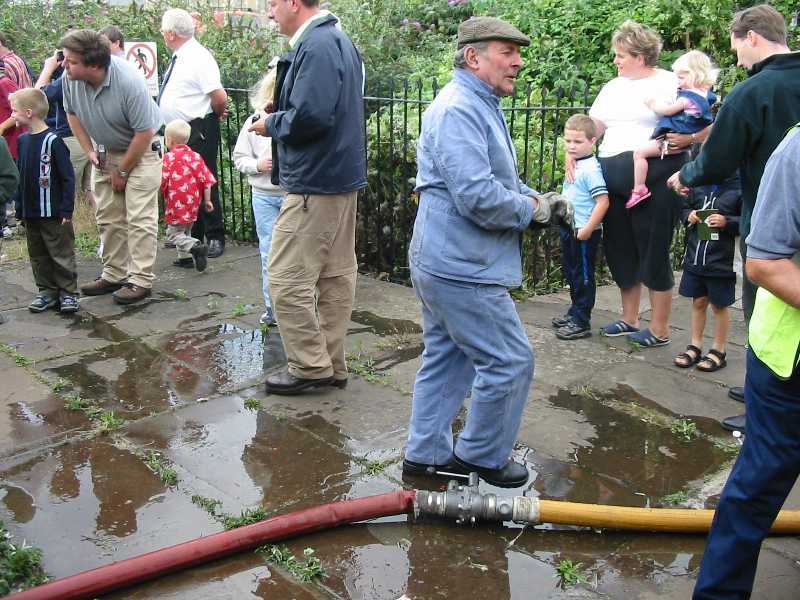
Rewatering the loco at Frome
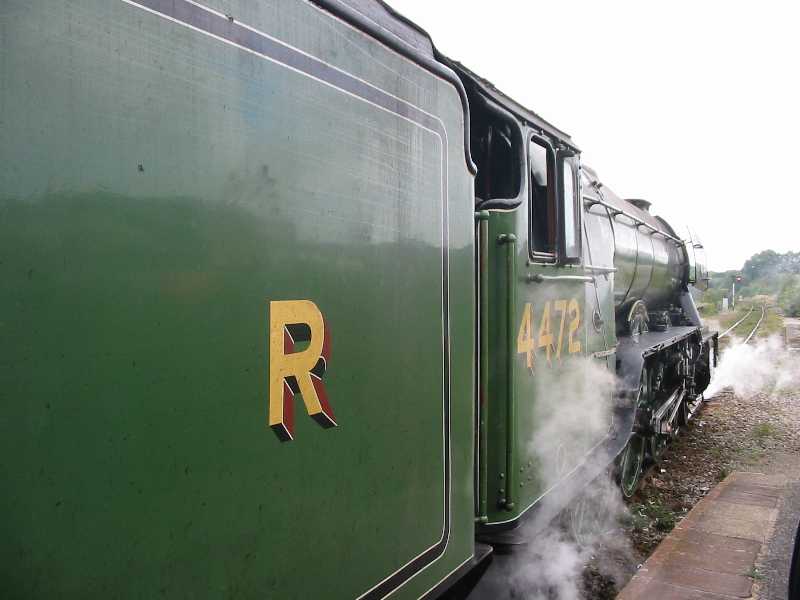
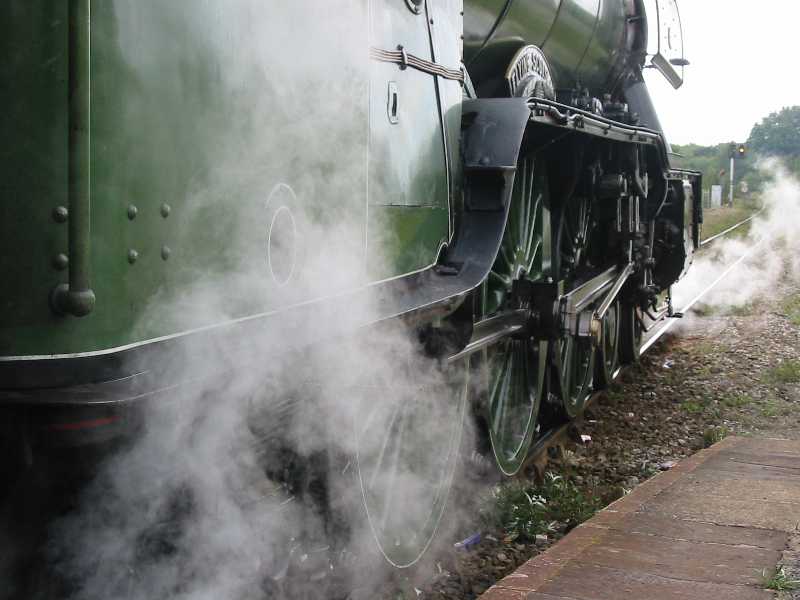


The photos above were only taken by being quick off the train. A huge crowd
soon collected - Flying Scotsman is the most photographed locomotive in the
world.
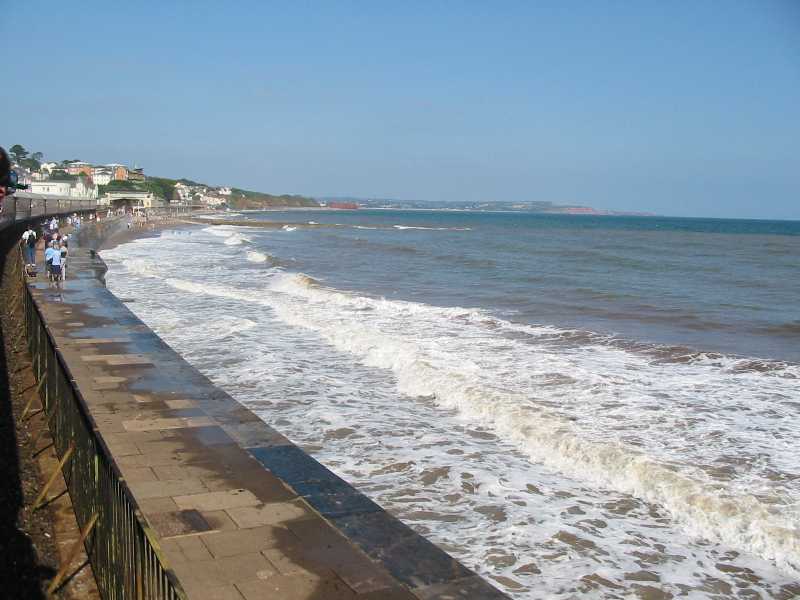
Travelling along the sea-wall at Dawlish
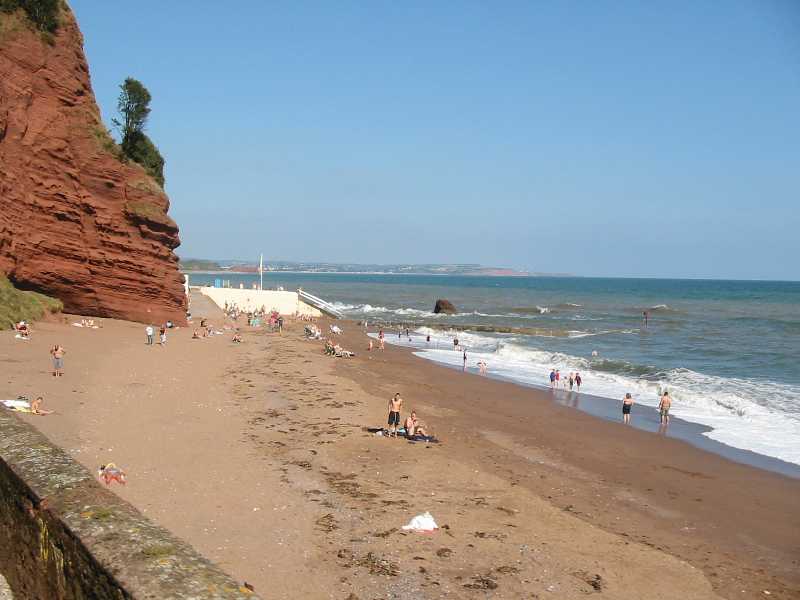
Horse Cove, with Exmouth visible on the far side of the estuary of the Exe.
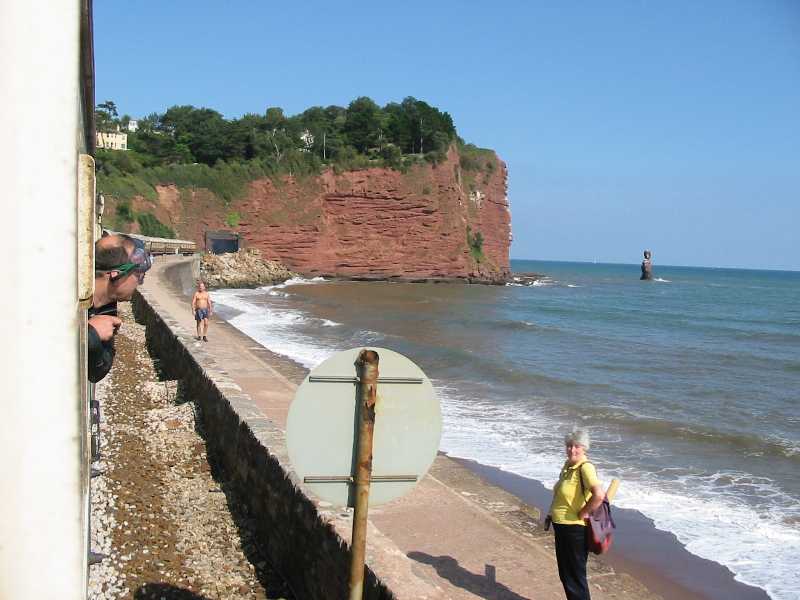
The sea and some of our thirteen coaches, with Shag Rock poking above the
waves
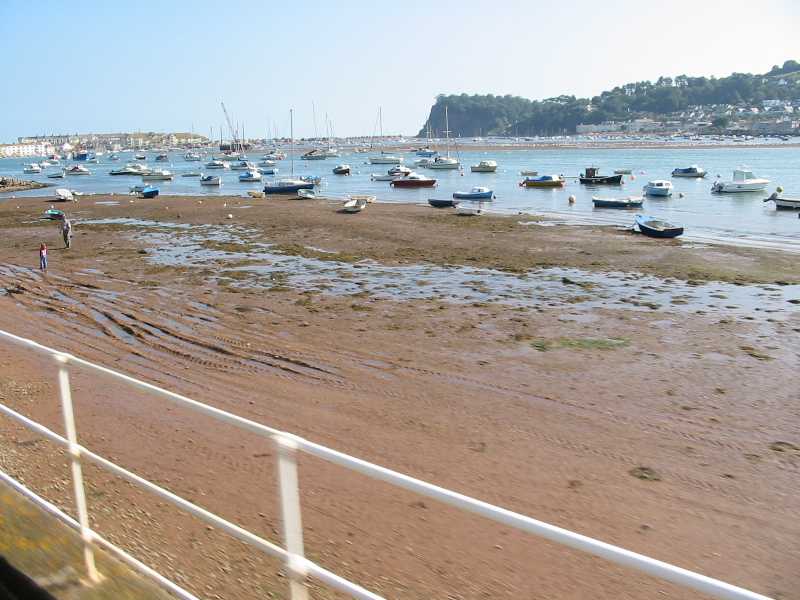
Looking across the Teign from Teignmouth towards Shaldon and Ringmore
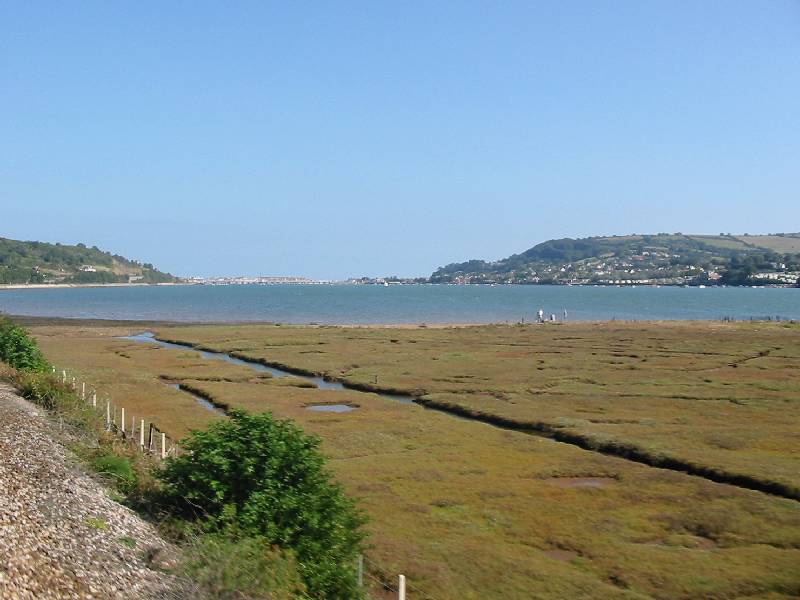
From further up the Teign, looking back towards the sea
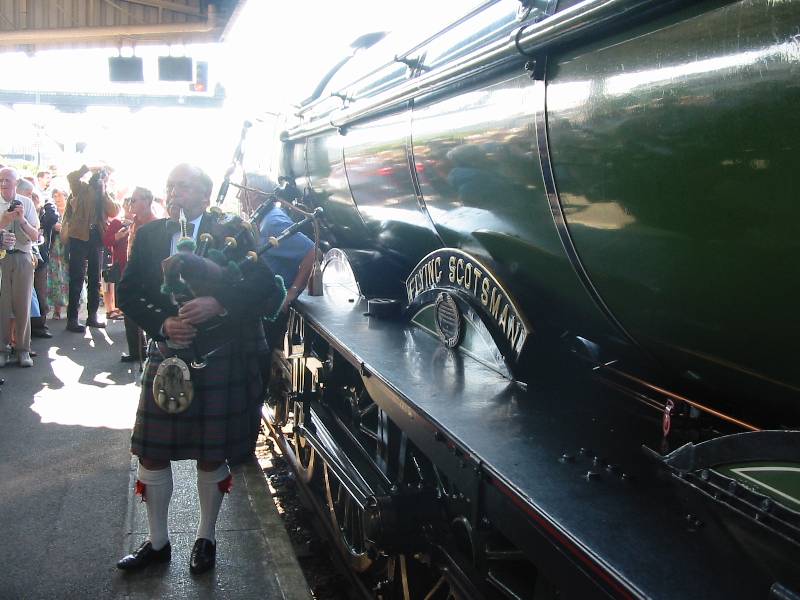
The piper plays to celebrate our arrival in Plymouth
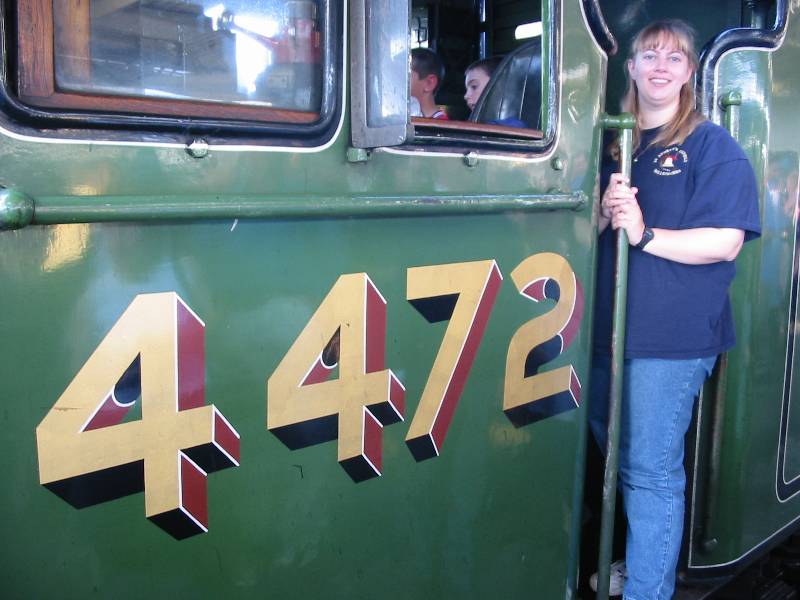
Lucy on the footplate of Flying Scotsman

The plaque in the middle reads:
On August 8th 1989 this locomotive achieved the world's
longest non-stop run for steam traction of 422 miles 7.53 chains between Parkes
and Broken Hill in New South Wales, Australia

Palm trees in Armarda Way in the centre of Plymouth

The Flying Scotsman in Plymouth, as we begin our return journey to London
behind a rather more modern Class 66 diesel.
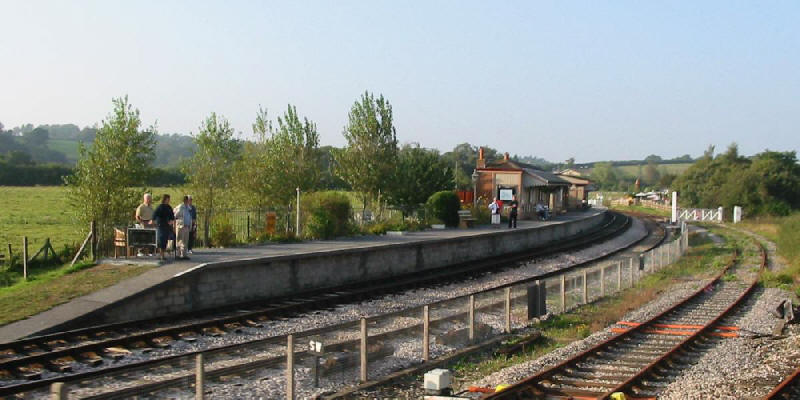
Totnes (Littlehampton Riverside) station on the South Devon Railway.
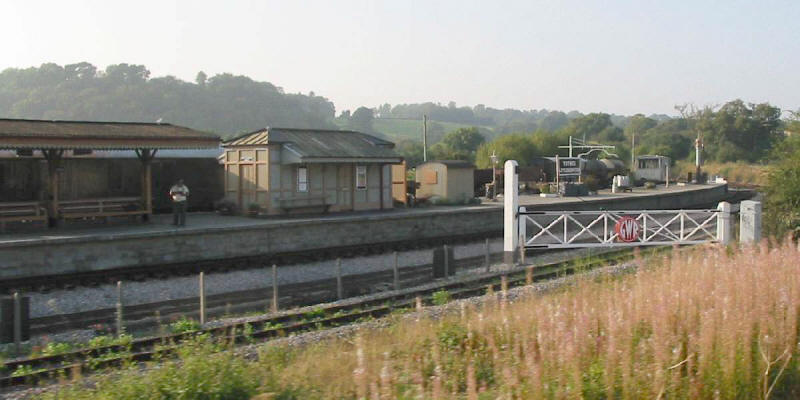
|